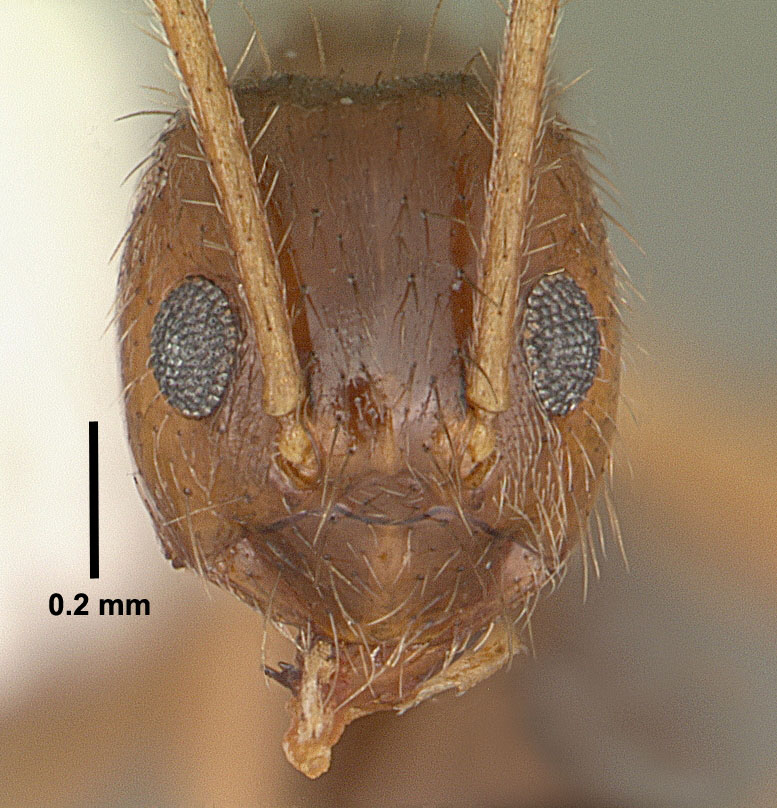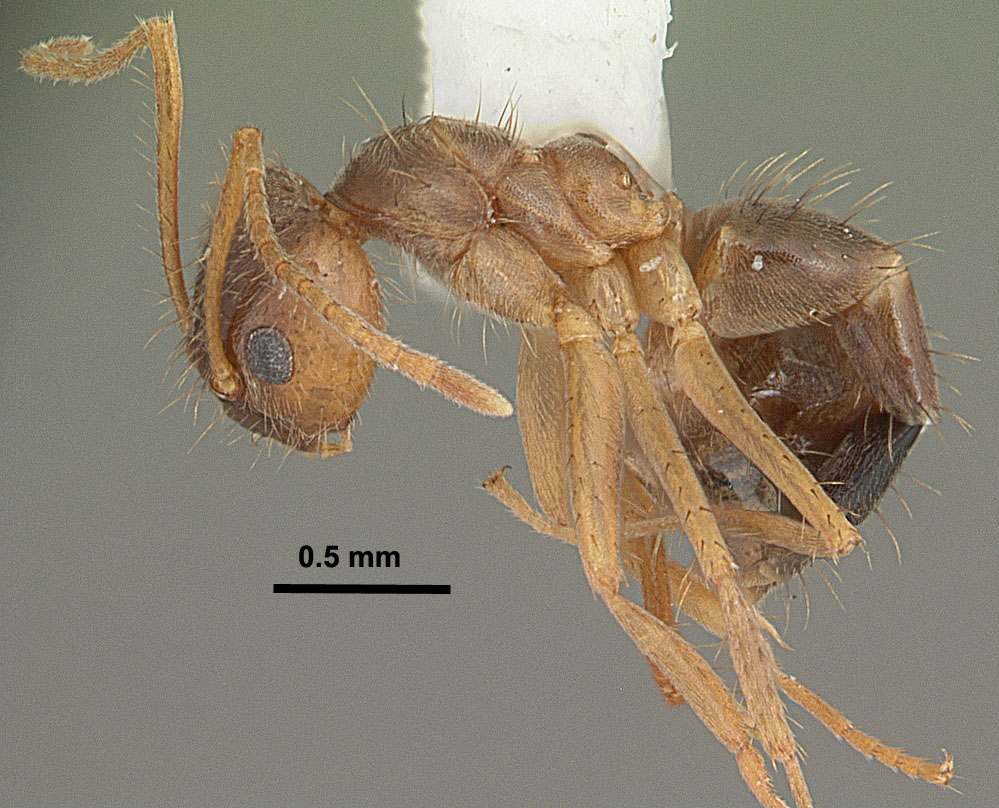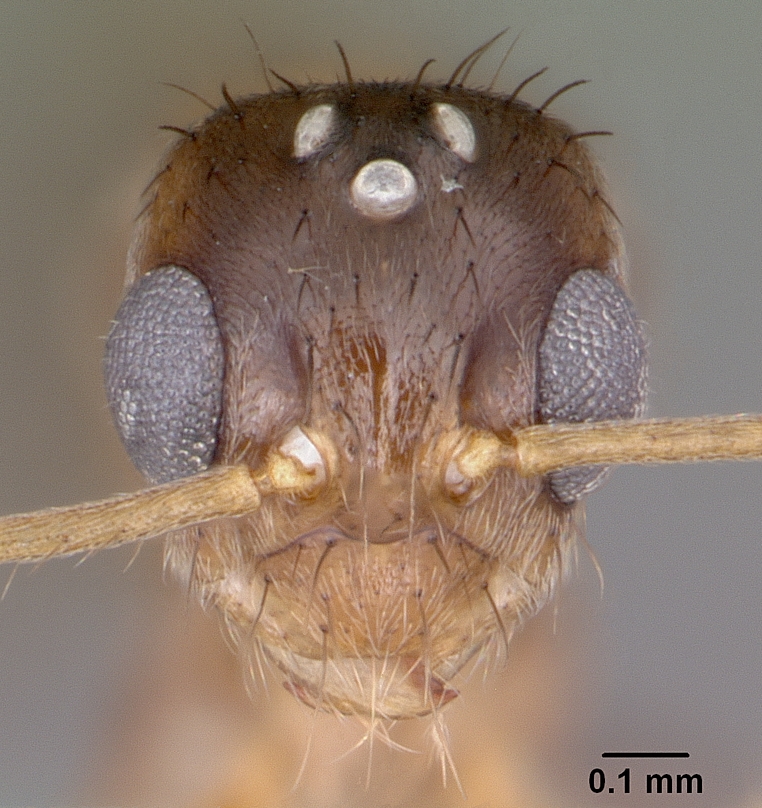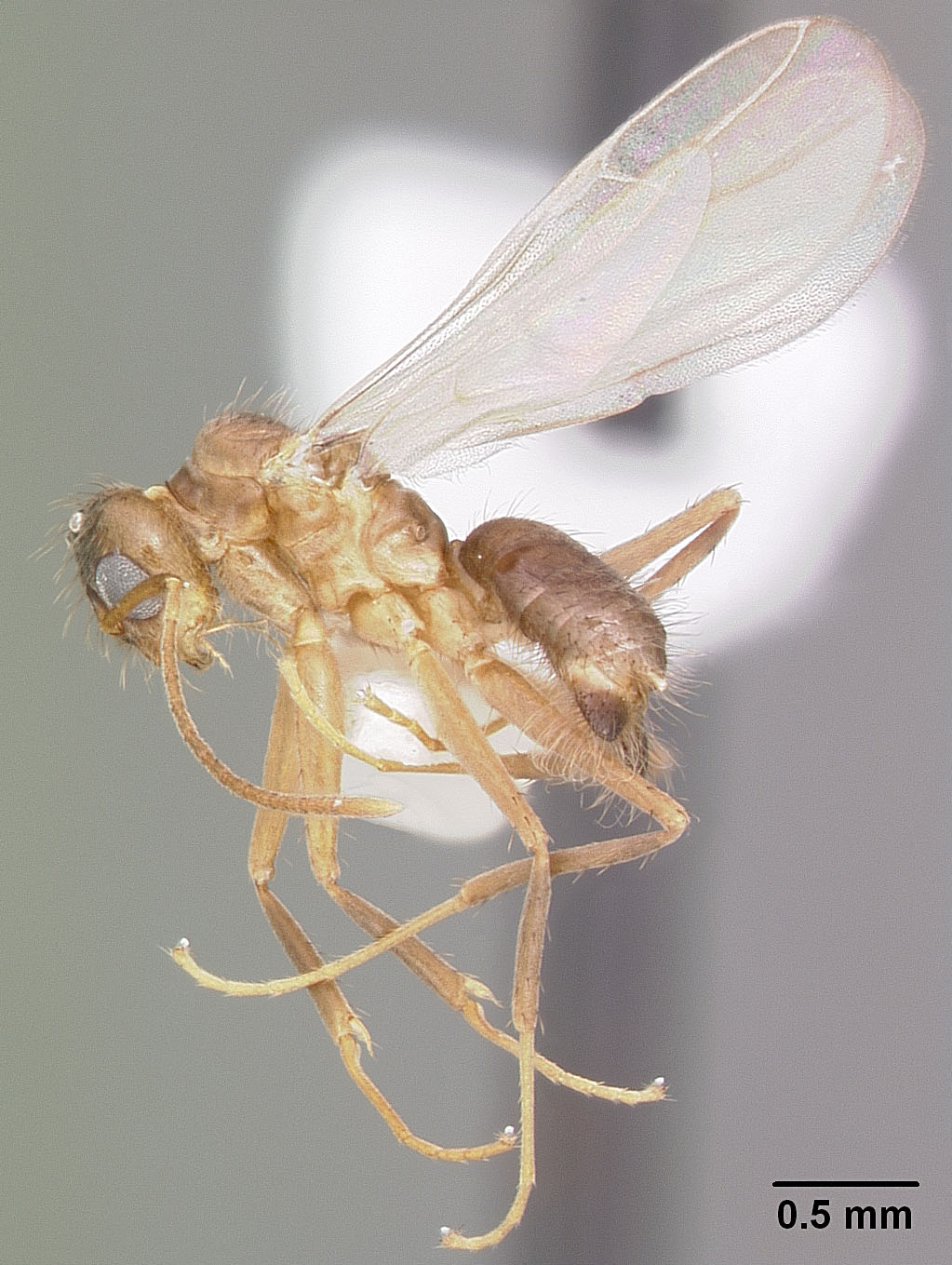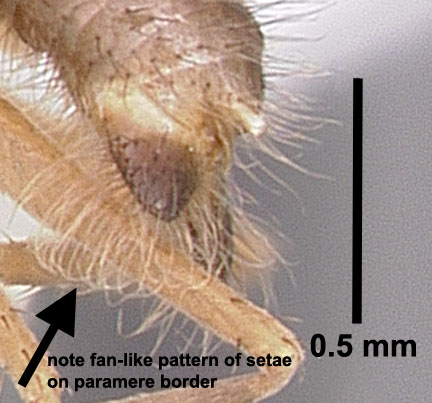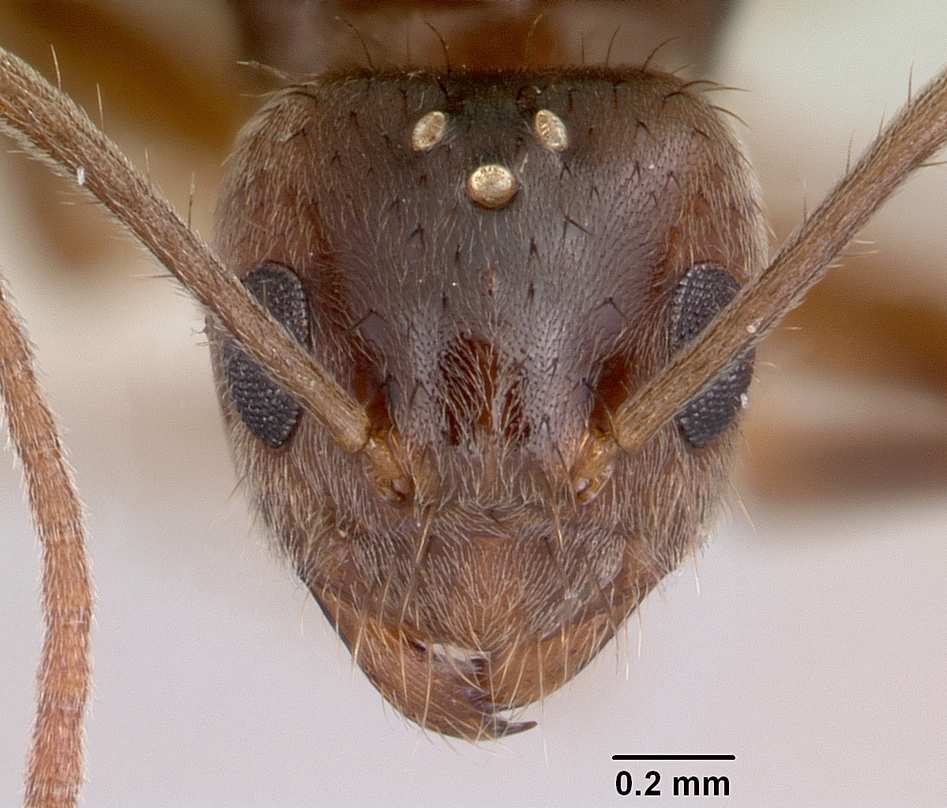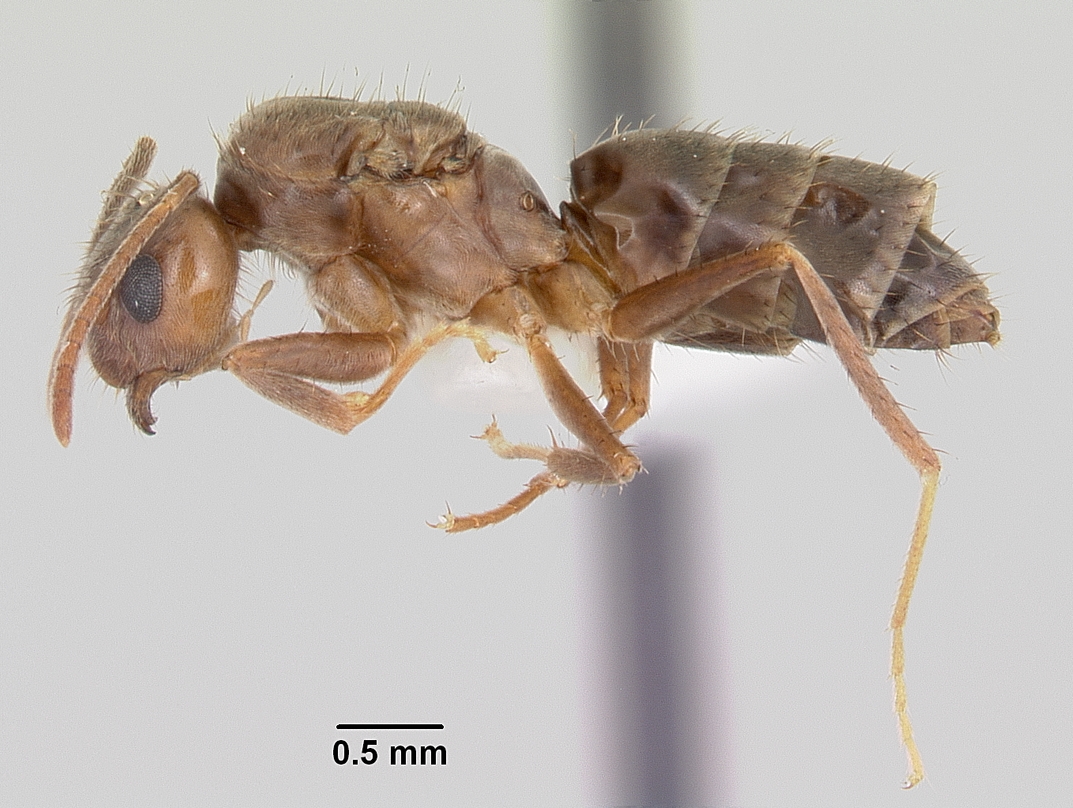Subfamily FORMICINAE Tribe LASIINI Nylanderia pubens (Forel 1893) |
|
Nylanderia pubens, full face view of a worker from FL (click image to enlarge). |
Nylanderia pubens, profile view of a worker from FL (click image to enlarge). Photo courtesy of http://www.antweb.org/ |
Nylanderia pubens, full face view of a male from FL (click image to enlarge). |
Nylanderia pubens, profile view of a male from FL (click image to enlarge). Photo courtesy of http://www.antweb.org/ |
Nylanderia pubens, view of paramere of male genitalia. Note the fan-like array of setae on paramere (click image to enlarge). Photo courtesy of http://www.antweb.org/ |
Nylanderia pubens, full face view of a female from FL (click image to enlarge). Photo courtesy of http://www.antweb.org/ |
Nylanderia pubens, profile view of a female from FL (click image to enlarge). Photo courtesy of http://www.antweb.org/ |
|
Introduction Nylanderia pubens (Forel) was described from specimens from the Caribbean. This species was later reported as occurring in Florida as early as 1953. In the US, this species may be restricted to southern FL, although more northern collections in greenhouses have been reported (Trager). During the last 20 years, specimens of this species from the US have been confused in the literature with N. fulva, a very closely related South American species. Workers of these two species are difficult to distinguish from one another, but males are more easily separated. Identification (from Trager, 1984) Female: Similar reddish-brown coloration to workers; about 4.0 mm in overall length; acidopore present at tip of gaster. Male: Reddish-brown. Size slightly larger than workers, about 2.6-3.2 mm in overall length; eye size much larger, OI 40-42. Scape elongate (SI 141-145), with numerous macrochaetae. Thorax with well developed wings. Genitalia external with well developed parameres; dense fringe of long, yellowish-brown setae arranged in fan-like pattern along borders of paramere. Workers of this species are difficult to separate from workers of N. fulva. In general, N. pubens workers are larger on average, the posterior border of the head is emarginate (straight or weakly emarginate in N. fulva), and has sparse pubescence on the head (much denser in N. fulva). Males are easier to separate from N. fulva than workers. Males of N. pubens have more triangular parameres with a fan-like arrangement of elongate setae along borders; whereas, the parameres in N. fulva are much more tapered and the pilosity is reduced, of uneven length, and not arranged in any particular pattern. Other species of Nylanderia in the southern United States having dense pubescence on the alitrunk are N. bourbonica (Forel) and N. guatemalensis (Forel). Workers of Nylanderia bourbonica are larger, concolorous dark brown, and have ocelli; whereas, workers of N. guatemalensis are yellowish-brown and have a glabrous pronotal disk, with the sides of pronotum usually glabrous as well. Biology and Economic Importance Links |
|


